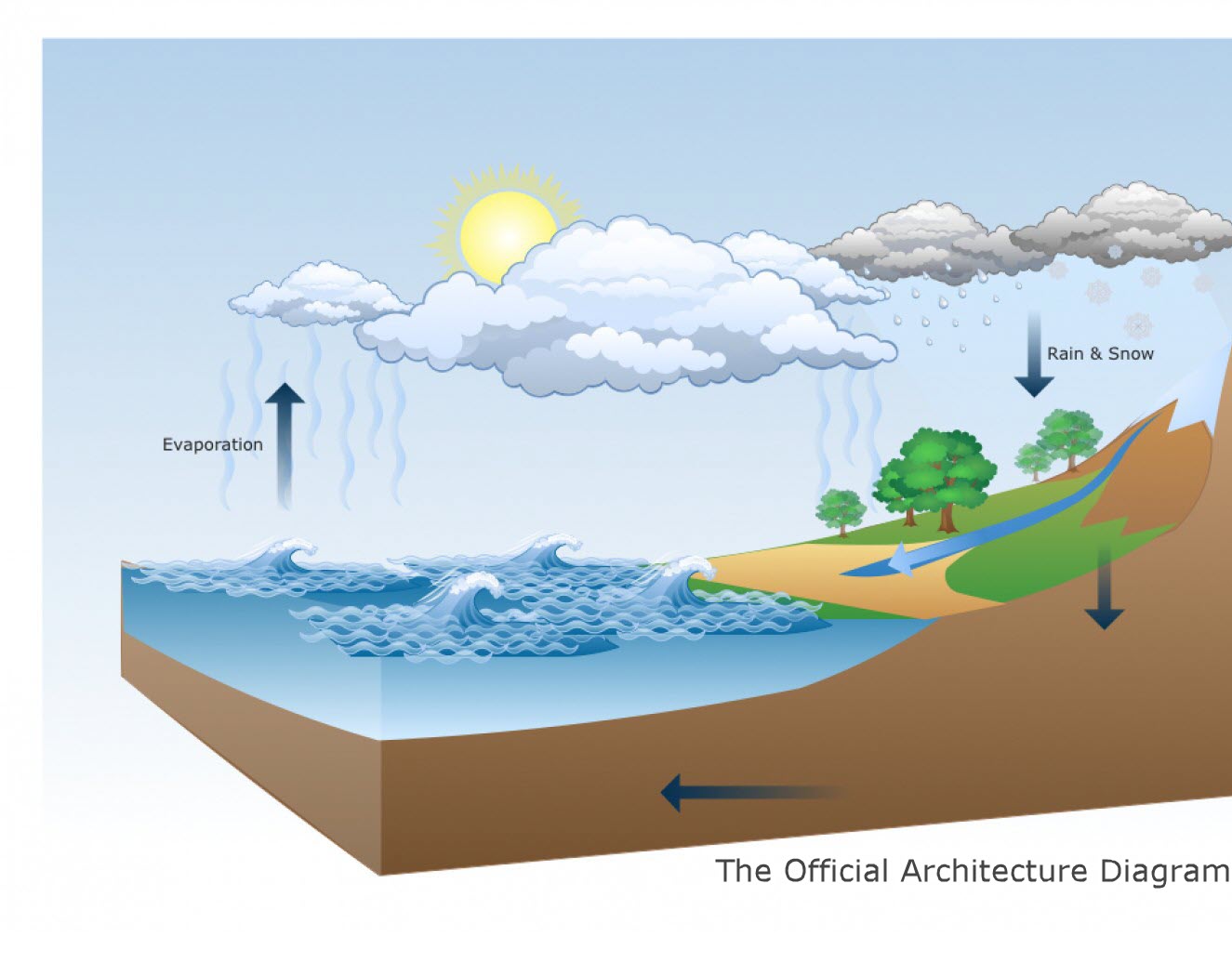It Is A Loop
Architecturally, re-frame implements "a perpetual loop".
To build an app, you hang pure functions on certain parts of this loop, and re-frame looks after the conveyance of data around the loop, into and out of the transforming functions you provide - "derived values, flowing".
Remember this diagram from school? The water cycle, right?

Two distinct stages, involving water in different phases, being acted upon by different forces: gravity working one way, evaporation and convection the other.
To understand re-frame, imagine data flowing around that loop instead of water.
re-frame provides the conveyance of the data around the loop - the equivalent of gravity, evaporation and convection. You design what's flowing, and then you hang functions on the loop at various points to compute the data's phase changes.
Sure, right now, you're thinking "lazy sod - make a proper Computer Science-y diagram". But, no. Joe Armstrong says "don't break the laws of physics" - I'm sure you've seen the videos - and if he says to do something, you do it (unless Rich Hickey disagrees, and says to do something else).
So, this diagram, apart from being a plausible analogy which might help you to understand re-frame, is practically proof it does physics.
This, milord, is my family's axe. We have owned it for almost nine hundred years, see. Of course, sometimes it needed a new blade. And sometimes it has required a new handle, new designs on the metalwork, a little refreshing of the ornamentation ... but is this not the nine hundred-year-old axe of my family? And because it has changed gently over time, it is still a pretty good axe, y'know. Pretty good.
-- Terry Pratchett, The Fifth Elephant
reflecting on identity, flow and derived values